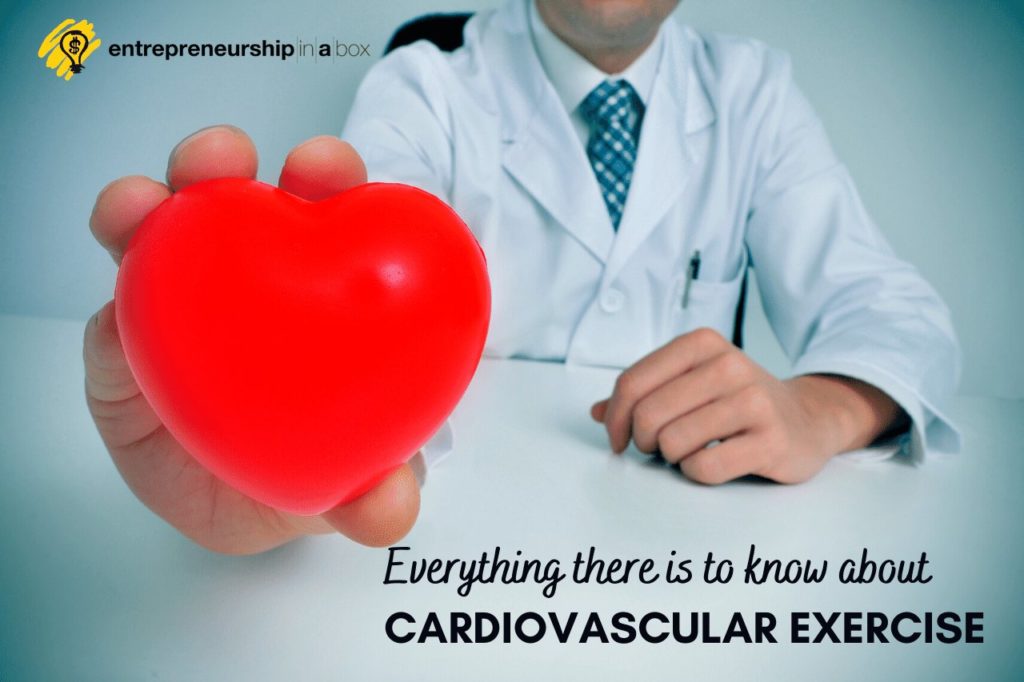Cardiovascular exercises are designed for balancing three issues to ensure maximum efficiency and safety:
- Duration
- Intensity
- Frequency
You will require a warm-up period prior to entering the target intensity duration of your workout as well as a cool-down period before ending your workout.
What Is Cardiovascular Workout?
Common cardiovascular workouts include brisk walking, cycling, running, rowing, swimming, and cross-country skiing. Cardio equipment in the gym includes elliptical trainers, treadmills, stepping machines, stationary cycles, ski trainers, and rowing machines.
Cardio exercises are useful for raising your breathing and heart rates into moderate to dynamic intensity levels for ten minutes or more. Workouts that are done specifically for building strength, like weightlifting, resistance exercises, weight machines, and core exercises, are generally not viewed as cardio workouts. They are intended at boosting strength, and not cardiovascular endurance.
But you structure specific weightlifting exercises to speed your heart rate and obtain a cardio benefit. For instance, a superset workout offers minimal rest between workouts. Subsequently, your heart rate remains elevated throughout a sequence of complex workouts.
Warm-Ups And Stretches
It is essential to warm up before the more intense part of your exercising to get your blood pumping to your muscles and to loosen up. Conventionally, the primary muscles to be used in your exercise regime had to be stretched during your warm-up. Check out the CardioTech website for cardio exercise equipment. There are various opinions on the use and efficiency of stretches, with some professionals advising a dynamic warm-up with no static stretches before a cardiovascular workout. The following is recommended:
- Doing a 5-Minute to 10-minute low-intensity warm-up – fifty or sixty percent of your maximum heart rate) to gradually raise your heart rate and prepare muscles for exercise.
- Doing whichever activity for the workout – as a warm-up. If you are running, begin at an easy pace with low intensity on your heart rate.
- Stretching the muscles that you will be using in your exercise – after warm-up, they can benefit from flexibility stretches particular to the muscles that you are using in your workout.
Cool-Down After Exercise
After your workout, you must cool down for about five to ten minutes with lower intensity activity (fifty to sixty percent of your maximum heart rate).
Regularity Of Cardiovascular Workouts
It is recommended that you do moderate-intensity cardio activity for at least 150 minutes and 75 minutes of dynamic cardio activity spread out over a week. To give your body the opportunity to build and repair your muscles, switch between long or intense cardio workouts with a day of easy exercise or rest. On the easy days, you can do a yoga session or go for a slow walk. For best cardio results, try to do between twenty and sixty minutes of exercise per session, including warm-up and cool-down.
Cardiovascular Workout Intensity
When starting a new fitness regime, focus on adding duration with good form and posture before boosting the intensity of your exercise. If you’re walking for exercise, boost the number of minutes by about ten percent per week. Once you’re walking more comfortably and with the right posture and form at about sixty minutes, you can start focusing on intensity by adding hills, speed, or intervals.



